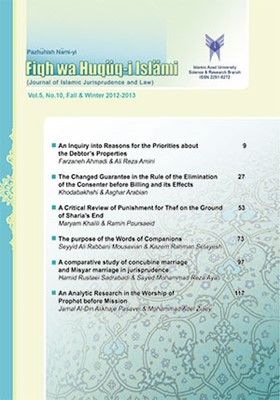Investigating the use of legal linguistics tools in detecting truthful testimony and its effect on improving judicial testimony using Highland's theoretical model
Subject Areas : Judgment jurisprudence and WitnessZohreh Bahrami 1 , Davood Madani 2 , Mahmoud Ghayoumzadeh 3
1 - PhD student in Linguistics, Khomein Branch, Islamic Azad University, Khomein, Iran.
2 - Assistant Professor, Department of Linguistics, Khomein Branch, Islamic Azad University, Khomein, Iran.
3 - Professor, Department of Law and Education, Saveh Branch, Islamic Azad University, Saveh, Iran.
Keywords: s theoretical model, metadiscourse, tools of legal linguistics, judicial testimony, Hyland',
Abstract :
Hyland's model is one of the most important models that linguists use for the interaction between the author of the text and the text itself, therefore, since in judicial testimony, the witness of the author and his statements is considered to be the text, and through the use of the interactive model of guidance and participation, it is possible to testify He recognized the lie and finally helped to improve the judicial testimony For this reason, the author has discussed and investigated "the use of legal linguistics tools in the detection of truthful testimony and its effect on improving judicial testimony using Hyland's theoretical model" in a library method and with a descriptive-analytical approach and has come to this conclusion. That Because the witness in the interrogation seeks to advance the testimony in favor of himself and the petitioner, and by violating the principle of Hyland, he suffers contradictions in his testimony, but judicial courts using linguistic principles, especially the principle of Hyland, do not allow The witness constantly changes or advances the subject according to his will or move the cases according to his wish and in his own interest. Examining the cases related to judicial testimony shows that when lying, the witnesses use the most signs such as: doubters and implicators, etc.


